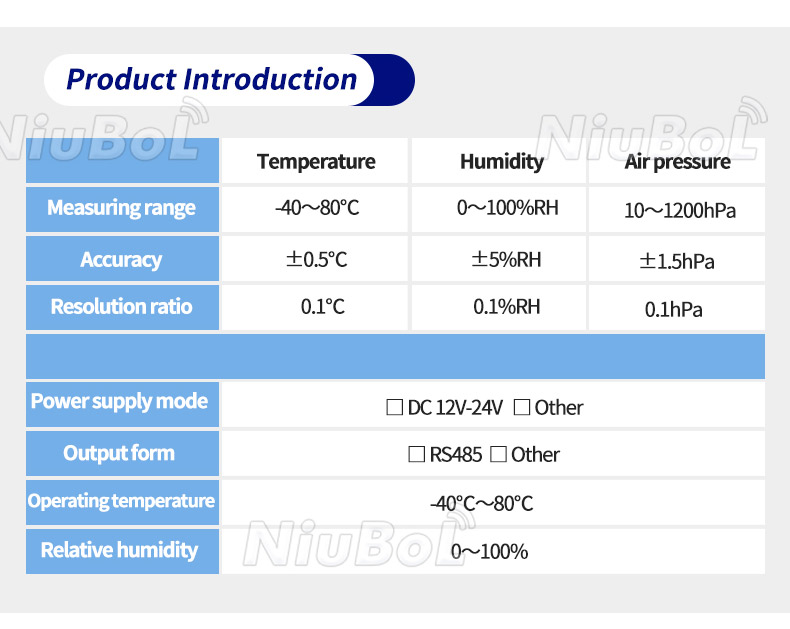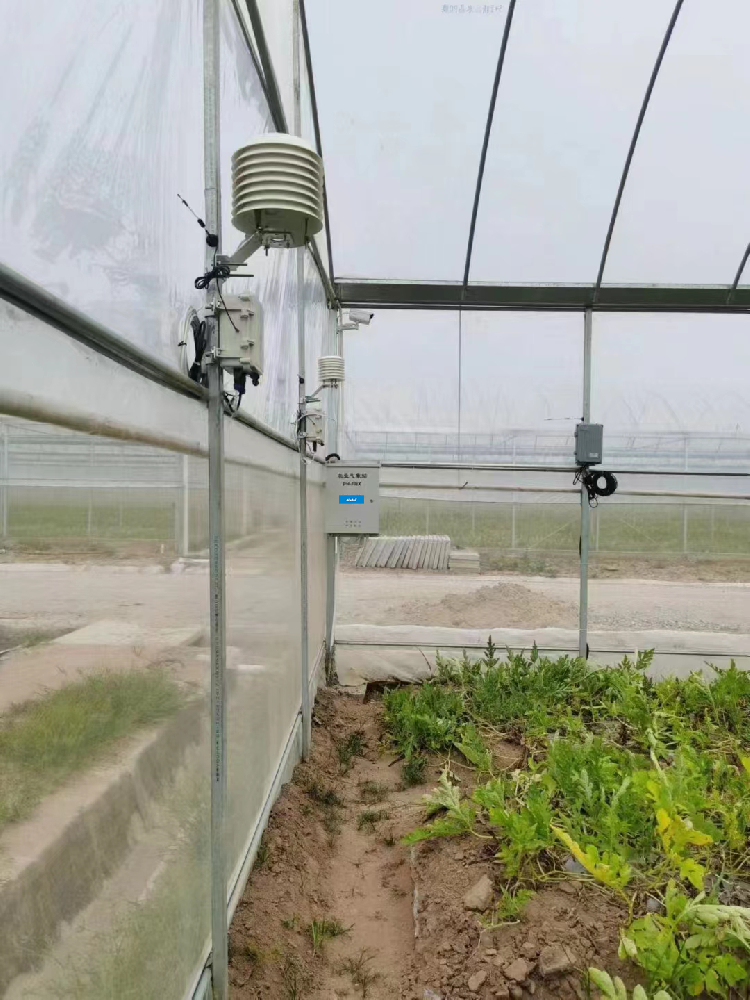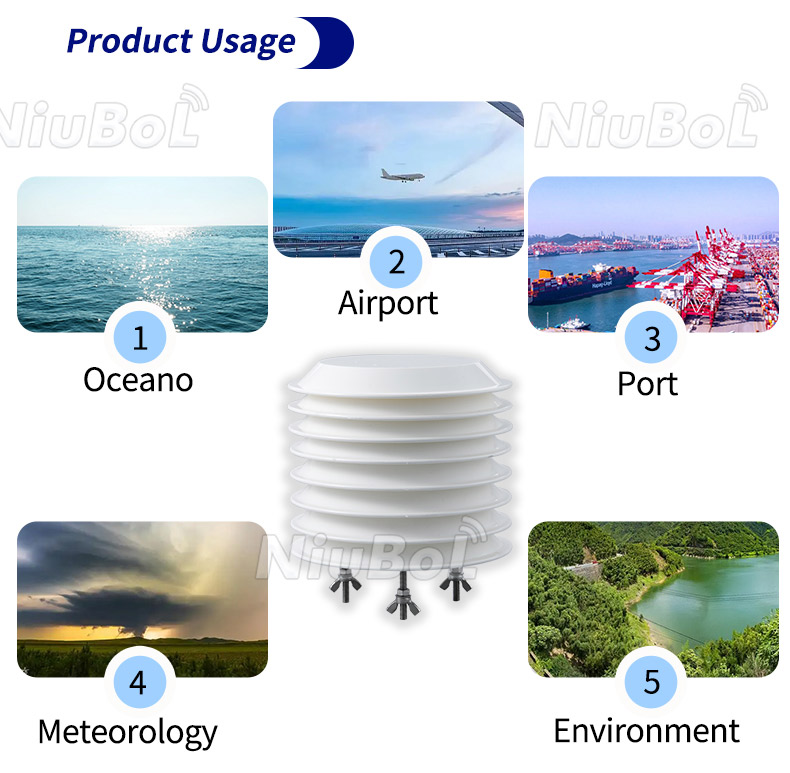

— Blogs —
—Products—
 Consumer hotline +8618073152920
Consumer hotline +8618073152920 WhatsApp:+8615367865107
Address:Room 102, District D, Houhu Industrial Park, Yuelu District, Changsha City, Hunan Province, China
Product knowledge
Time:2024-09-17 09:57:03 Popularity:7505
An Ambient Temperature Sensor is a sensor that measures the temperature of the surrounding environment. It detects the temperature of the air and converts it into a readable value, usually expressed in degrees Celsius (°C) or degrees Fahrenheit (°F). It realizes real-time monitoring and recording of ambient temperature by sensing temperature changes in the environment and converting the temperature information into a readable electrical or digital signal. These sensors are widely used in household appliances, industrial equipment, weather monitoring systems, smart homes, and many other applications.
Ambient temperature sensors work based on a variety of physical effects, the more common of which are the thermoelectric effect, resistance changes. The following are some common types of ambient temperature sensors:
1. Thermocouple: A thermocouple consists of wires of two different metals (e.g., copper and conchoidal copper). When the two joints of these two metals are at different temperatures, an electric potential (i.e., a thermoelectric potential) is generated at the joints, which is proportional to the temperature difference. By measuring this electromotive force, the temperature value can be deduced.
2. Thermistor: The resistance value of a thermistor changes with temperature. Most thermistors have a negative temperature coefficient (NTC), which means that the resistance value decreases with increasing temperature. By measuring the resistance value of the thermistor, the ambient temperature can be deduced.
3. Integrated Temperature Sensors: Modern temperature sensors, such as digital temperature sensors, typically integrate temperature-sensitive components, signal processing circuits, and output circuits on a single chip. These sensors utilize the temperature characteristics of semiconductor materials to derive the temperature value by measuring certain electrical parameters (e.g., current, voltage) of the semiconductor device.
4. Resistance Temperature Detectors (RTDs):
Utilizing the property of the resistance of a metallic conductor to change with temperature, materials such as platinum, nickel or copper are usually used.
5. Infrared Sensors (Infrared Sensors):
Measure the temperature by detecting the infrared radiation emitted by the object, without direct contact with the object to be measured.

1. Sensing: The sensor senses changes in ambient temperature.
2. Conversion: The temperature change is converted into an electrical signal (e.g., voltage or resistance change).
3. Processing: The electrical signal is processed and converted to a digital value, which is read by a microprocessor or analog circuit.
4. Output: Ultimately, the temperature value can be output via a display, data logger or remote monitoring system.

1. Smart Home: Ambient Temperature Sensor can be used in intelligent thermostat control system to automatically adjust the temperature of air conditioner or heater according to the change of indoor temperature to provide a comfortable living environment.
2. Meteorological monitoring: In weather stations or meteorological equipment, ambient temperature sensors are used to monitor and record changes in ambient temperature to provide data support for meteorological forecasting and research.
3. Industrial automation: in the industrial production process, the ambient temperature sensor is used to monitor and control the temperature of the production environment, to ensure the stability of the production environment and product quality.
4. Agriculture: In greenhouses or farmland, ambient temperature sensors can help farmers monitor the ambient temperature and rationalize the planting and management of crops.
5. Medical equipment:
- Used to monitor the patient's body temperature to help diagnose and treat diseases.
6. Transportation:
- In cars, airplanes and other transportation to monitor the engine temperature, to ensure driving safety.
7. Residential and commercial buildings: In residential and commercial buildings, Ambient Temperature Sensor is used to automate heating, ventilation and air conditioning (HVAC) systems. By monitoring indoor and outdoor temperatures in real time, these systems can automatically adjust to maintain a comfortable environment and save energy.
8. Electronic equipment: In electronic equipment, such as computers and servers, Ambient Temperature Sensors are used to monitor the temperature around the equipment to prevent overheating. They work in conjunction with fans and other cooling systems to ensure that equipment operates within a safe temperature range, extending its life and improving performance.
1. Improved Comfort: In smart homes, ambient temperature sensors ensure that indoor temperatures are always within a comfortable range, improving occupant comfort.
2. Improve productivity: In industrial production, by monitoring and controlling the ambient temperature in real time, the stability of the production environment can be ensured, thus improving productivity and product quality.
3. Reducing energy consumption: Through the intelligent thermostat control system, the ambient temperature sensor can automatically adjust the temperature of the air conditioner or heater according to the change of indoor temperature, thus reducing unnecessary energy consumption.
4. Scientific research and prediction: In meteorological monitoring, the data provided by Ambient Temperature Sensor can be used for meteorological prediction and scientific research, providing strong support for people's production and life.
The value of Ambient Temperature Sensors lies in their ability to provide accurate, real-time temperature data, which is critical to ensuring the efficient operation of systems and equipment, maintaining environmental conditions, and enabling automated control. By monitoring and controlling ambient temperature, these sensors help improve energy efficiency, extend equipment life, ensure safety and comfort, and support scientific research and forecasting.

Summary:
Ambient temperature sensors can be categorized as direct contact or non-contact in their operation. Direct contact sensors (e.g., thermistors, thermocouples, and RTDs) require direct contact with the object under test to accurately measure its temperature. Non-contact sensors (such as infrared temperature sensors), on the other hand, do not require physical contact; they measure temperature by detecting infrared radiation emitted by the object.
With these sensors, temperature changes can be converted into electrical signals, which can then be processed and converted by circuits to ultimately output a temperature value. These sensors play a key role in a variety of applications, from home appliances and automotive systems to industrial process control and scientific research.
NBL-W-LBTH-Atmosphere-temperature-humidity-and-pressure-sensor-instruction-manual-V4.0.pdf
NBL-W-WHTP-Wall-Mounted-Temperature-Humidity-and-Pressure-Sensors.pdf
Prev:What are the applications of temperature and humidity sensor?
Next:What is the difference between automatic weather station and handheld weather station?
Related recommendations
Sensors & Weather Stations Catalog
Agriculture Sensors and Weather Stations Catalog-NiuBoL.pdf
Weather Stations Catalog-NiuBoL.pdf
Related products
 Combined air temperature and relative humidity sensor
Combined air temperature and relative humidity sensor Soil Moisture Temperature sensor for irrigation
Soil Moisture Temperature sensor for irrigation Soil pH sensor RS485 soil Testing instrument soil ph meter for agriculture
Soil pH sensor RS485 soil Testing instrument soil ph meter for agriculture Wind Speed sensor Output Modbus/RS485/Analog/0-5V/4-20mA
Wind Speed sensor Output Modbus/RS485/Analog/0-5V/4-20mA Tipping bucket rain gauge for weather monitoring auto rainfall sensor RS485/Outdoor/stainless steel
Tipping bucket rain gauge for weather monitoring auto rainfall sensor RS485/Outdoor/stainless steel Pyranometer Solar Radiation Sensor 4-20mA/RS485
Pyranometer Solar Radiation Sensor 4-20mA/RS485
Screenshot, WhatsApp to identify the QR code
WhatsApp number:+8615367865107
(Click on WhatsApp to copy and add friends)
